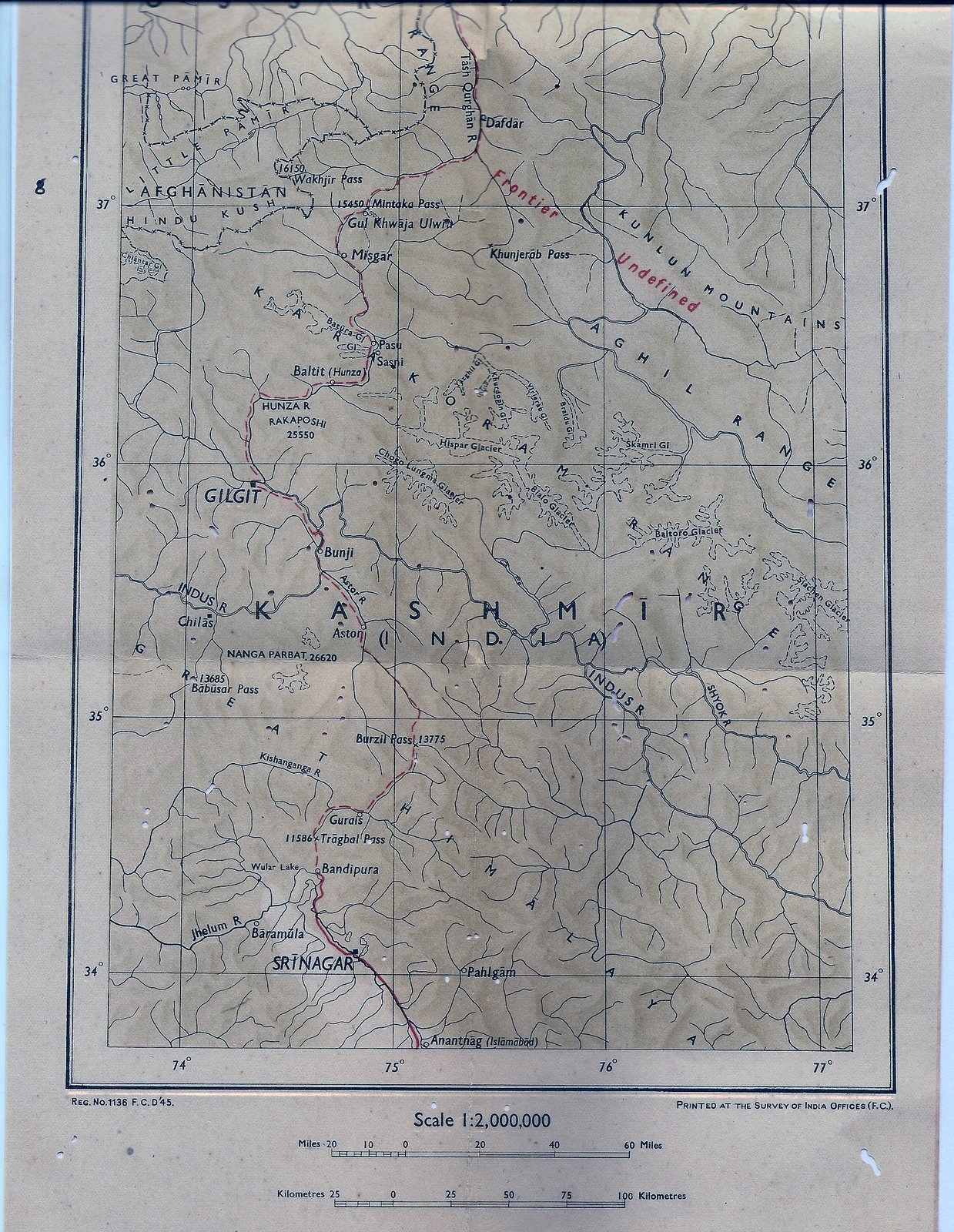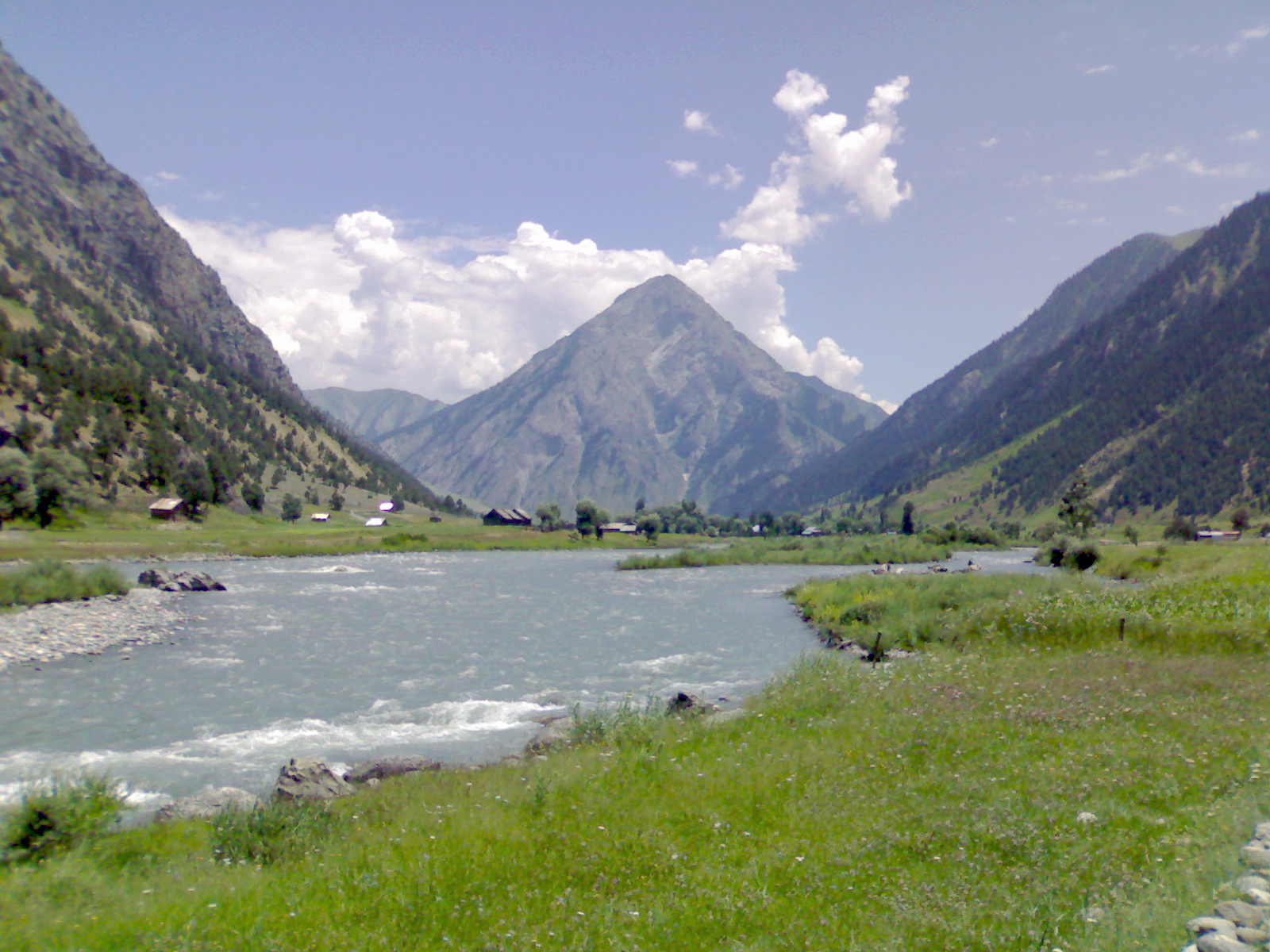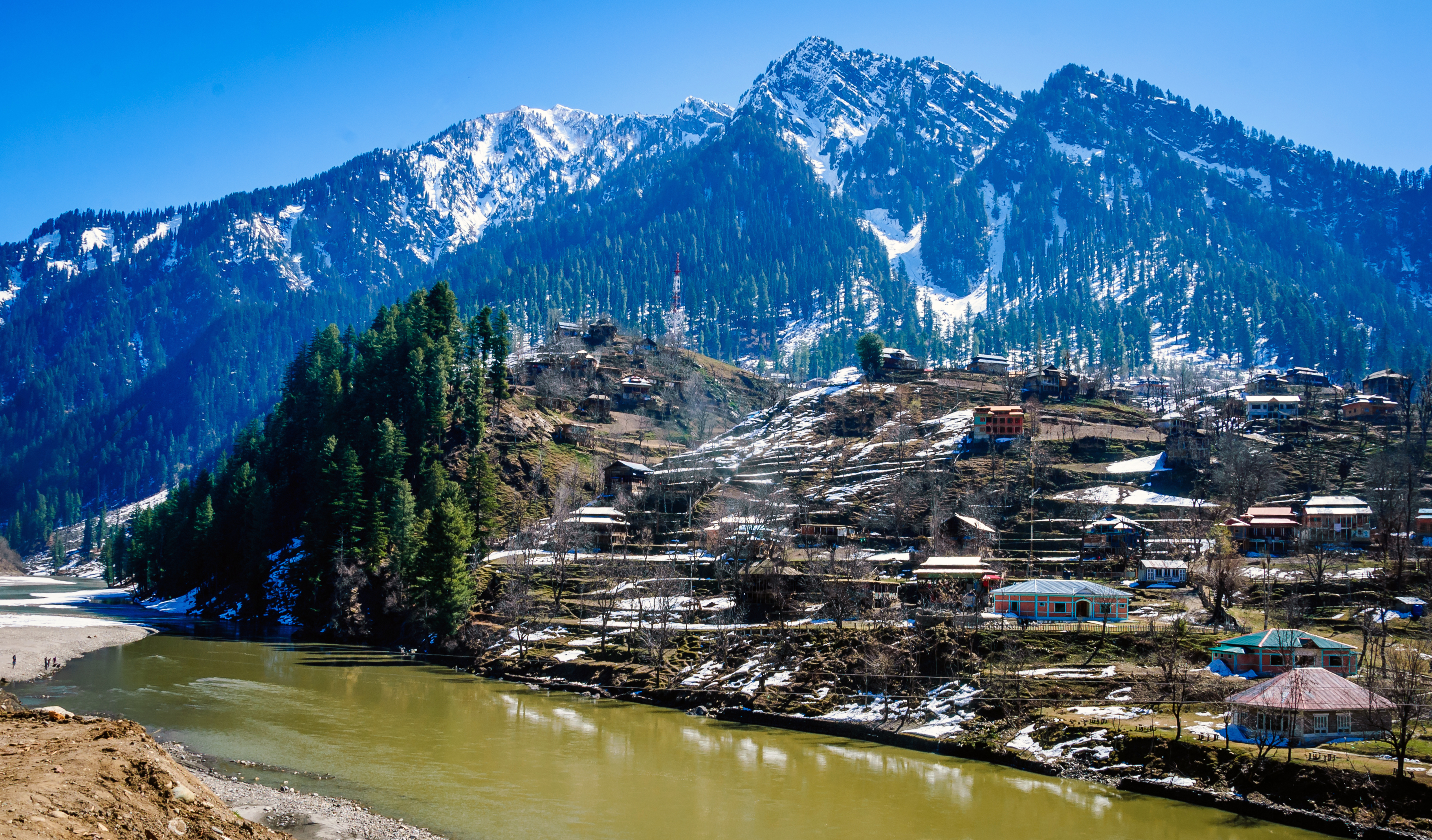Kishenganga River on:
[Wikipedia]
[Google]
[Amazon]
The Neelum River, or Kishanganga River, is a river in the
 The river has traditionally been known as the Kishanganga River ( ur, ) and is still known as such in India; after the partition of India in 1947, the river was renamed the Neelum River () in Pakistan in 1956.
The river has traditionally been known as the Kishanganga River ( ur, ) and is still known as such in India; after the partition of India in 1947, the river was renamed the Neelum River () in Pakistan in 1956.

 The Kishanganga River is 245 kilometres long. It covers 50 kilometers in the Indian-administered Kashmir where it flows through the Tulail Valley and then Gurez Valley. It covers the remaining 195 kilometres in Pakistan-administered Kashmir and flows through the. From its origin it flows through the
The Kishanganga River is 245 kilometres long. It covers 50 kilometers in the Indian-administered Kashmir where it flows through the Tulail Valley and then Gurez Valley. It covers the remaining 195 kilometres in Pakistan-administered Kashmir and flows through the. From its origin it flows through the
DNA (newspaper). The "Save Sharada Committee" of concerned Hindus has been demanding the opening of special corridor from India to Sharada Peeth in Pakistan-administered Kashmir for the visits of Hindu pilgrims from India.Supreme Court in PoK intervenes to save Sharda temple
DNA (newspaper).
part 1part 2part 3
part 4part 5part 6
Neelum Valley Official
{{Authority control Rivers of Azad Kashmir Rivers of Jammu and Kashmir Indus basin International rivers of Asia Rivers of Pakistan Rivers of India
Kashmir region
Kashmir () is the northernmost geographical region of the Indian subcontinent. Until the mid-19th century, the term "Kashmir" denoted only the Kashmir Valley between the Great Himalayas and the Pir Panjal Range. Today, the term encompas ...
of India and Pakistan. It originates in Bandipora district
Bandipore district (also spelt as Bandipora or Bandipur) is one of the 20 districts in the Indian union territory of Jammu and Kashmir. Bandipore town is the administrative headquarters of the district. Bandipore, a township with peculiar scenic ...
of northern Jammu and Kashmir in India, flows through the Neelam District
The district of Neelum (spelt also ''Neelam''; ur, ) is the northernmost of 10 districts located within the Pakistani-administered territory of Azad Kashmir. Taking up the larger part of the Neelam Valley, the district has a population of ar ...
of Pakistan's Azad Kashmir and then merges with the Jhelum River
The Jhelum River (/dʒʰeːləm/) is a river in the northern Indian subcontinent. It originates at Verinag and flows through the Indian administered territory of Jammu and Kashmir, to the Pakistani-administered territory of Kashmir, and then ...
near the city of Muzaffarabad
Muzaffarabad (; ur, ) is the capital and largest city of Azad Kashmir, and the 60th largest in Pakistan.
The city is located in Muzaffarabad District, near the confluence of the Jhelum and Neelum rivers. The district is bounded by the Pak ...
.
Name of the river
 The river has traditionally been known as the Kishanganga River ( ur, ) and is still known as such in India; after the partition of India in 1947, the river was renamed the Neelum River () in Pakistan in 1956.
The river has traditionally been known as the Kishanganga River ( ur, ) and is still known as such in India; after the partition of India in 1947, the river was renamed the Neelum River () in Pakistan in 1956.
Basin
''Shardadesh'' is a name for the drainage basin of the Kishanganga River.Course
The Kishanganga River originates from Krishansar Lake in the vicinity ofSonamarg
Sonamarg () or Sonmarg (), known as Sonamarag (; ) in Kashmiri, is a hill station located in the Ganderbal District of Jammu and Kashmir, India. It is located about 62 Kilometers from Ganderbal Town and northeast of the capital city, Srina ...
in the Indian union territory of Jammu and Kashmir, and runs northwards to Badoab village in Tulail Valley
The Tulail Valley is a Himalayan sub-valley of Gurez in the union territory of Jammu and Kashmir in India. The Valley lies northeast of Bandipora and from Srinagar the capital of Jammu and Kashmir. Tulail Valley lies immediate east of the Gu ...
where it meets a tributary from the Dras side. Then it runs westwards, parallel to the Kashmir Line of Control. It is fed by many glacial tributary streams on its way. It enters Pakistani self-governing territory of Azad Kashmir in the Gurez
Gurez, or Gurais (''Guráai'' in the local Shina language), is a valley located in the high Himalayas, about from Bandipore and from Srinagar, to the north of the Kashmir valley. At about above sea level, the valley is surrounded by snow-cap ...
sector of the Line of Control. Then it again runs west, parallel to the Line of Control, passing by Sharada. After Sharda, it bends to a southwesterly direction and runs along the Line of Control near Tithwal. Then it bends northwest again, making a wide arc to join the Jhelum River
The Jhelum River (/dʒʰeːləm/) is a river in the northern Indian subcontinent. It originates at Verinag and flows through the Indian administered territory of Jammu and Kashmir, to the Pakistani-administered territory of Kashmir, and then ...
in Muzaffarabad
Muzaffarabad (; ur, ) is the capital and largest city of Azad Kashmir, and the 60th largest in Pakistan.
The city is located in Muzaffarabad District, near the confluence of the Jhelum and Neelum rivers. The district is bounded by the Pak ...
..Recently the Go Gurez campaign has been launched to make people aware of the area.
Valleys

 The Kishanganga River is 245 kilometres long. It covers 50 kilometers in the Indian-administered Kashmir where it flows through the Tulail Valley and then Gurez Valley. It covers the remaining 195 kilometres in Pakistan-administered Kashmir and flows through the. From its origin it flows through the
The Kishanganga River is 245 kilometres long. It covers 50 kilometers in the Indian-administered Kashmir where it flows through the Tulail Valley and then Gurez Valley. It covers the remaining 195 kilometres in Pakistan-administered Kashmir and flows through the. From its origin it flows through the Neelam Valley
The district of Neelum (spelt also ''Neelam''; ur, ) is the northernmost of 10 districts located within the Pakistani-administered territory of Azad Kashmir. Taking up the larger part of the Neelam Valley, the district has a population of ar ...
.
The Neelum Valley is a Himalayan gorge in the Kashmir region, along which the Neelum River flows. This green and fertile valley is 250 km in length and stretches its way from Muzaffarabad
Muzaffarabad (; ur, ) is the capital and largest city of Azad Kashmir, and the 60th largest in Pakistan.
The city is located in Muzaffarabad District, near the confluence of the Jhelum and Neelum rivers. The district is bounded by the Pak ...
all the way to Athmuqam
Athmuqam or Athmakam ( ur, آٹھمقام) is a Tehsil about 73 kilometres from Muzaffarabad, in Azad Kashmir. It is the headquarters of Neelum District. Its population was 7,922 in 2017.
The town is accessible by Neelum road from Muzaffara ...
and beyond to Taobutt. It is one of the most attractive tourists places, like Swat and Chitral, but due to poor road system is yet veiled to the outside world. This area was badly affected by the 2005 earthquake and was cut off from the outside world as the roads and paths were filled with rubble. Now construction of an international standard road is in progress. There are two entrances for Neelum valley, one Neelum Road by Muzaffarabad
Muzaffarabad (; ur, ) is the capital and largest city of Azad Kashmir, and the 60th largest in Pakistan.
The city is located in Muzaffarabad District, near the confluence of the Jhelum and Neelum rivers. The district is bounded by the Pak ...
and the other by Kaghan the Jalkhad Road. Generally Neelum valley starts just after Muzaffarabad but in political division the area from Muzaffarabad to Chelhana is named Kotla valley. District Neelum starts from Chelhana and goes up to Taobutt.
Ecology
Revival of fish species
There are different kinds of fish found in abundance in the Neelum River. As the river almost entirely runs across the Line of Control, being the main cause forKashmir conflict
The Kashmir conflict is a territorial conflict over the Kashmir region, primarily between India and Pakistan, with China playing a third-party role. The conflict started after the partition of India in 1947 as both India and Pakistan claimed ...
there is a feeling of uncertainty among the inhabitants, many of them have emigrated to safer places, which has left the river banks scarcely populous and kept the river in perfect conditions for growth of fish. The most famous among the different variety of fish found in Neelum River are:
* Brown trout (''Salmo trutta'')
* Rainbow trout (''Oncorhynchus mykiss'')
* Snow trout (''Schizothorax plagiostomus'')
*Shuddgurn
*Anyour
Dams
Kishanganga dam in India
In the Indian union territory of Jammu and Kashmir, the construction work on the 330 MWKishanganga Hydroelectric Plant
The Kishanganga Hydroelectric Project is a run-of-the-river hydroelectric scheme in Jammu and Kashmir, India. Its dam diverts water from the Kishanganga River to a power plant in the Jhelum River basin. It is located near Dharmahama Village, nor ...
project has started, after being defunct for eighteen years. Recently, the project was awarded to Hindustan Construction Company
Hindustan Construction Company Limited (HCC) is an Indian Engineering, Procurement, Construction, and Project Management companies. It is headquartered in Mumbai. HCC was founded by Industrialist Seth Walchand Hirachand in 1926.
HCC has exe ...
(HCC) with a timeline of seven years. The 330 MW Kishanganga hydro-electric power project involves damming of the Kishanganga River and the proposed 37 metre reservoir will submerge some parts of the Gurez valley. The water of Kishen Ganga River will be diverted through a 24 kilometre tunnel dug through the mountains to Bandipore where it will join the Wular Lake
Wular Lake (), also known as Wolar () in Kashmiri, is one of the largest fresh water lakes in South Asia. It is located near Bandipora town in Bandipora district of Jammu and Kashmir, India.
The lake basin was formed as a result of te ...
and then Jhelum River.
Neelum–Jhelum dam in Pakistan
Similarly,Pakistan
Pakistan ( ur, ), officially the Islamic Republic of Pakistan ( ur, , label=none), is a country in South Asia. It is the world's fifth-most populous country, with a population of almost 243 million people, and has the world's second-lar ...
is constructing the 969 MW Neelum–Jhelum Hydropower Plant
The Neelum–Jhelum Hydropower Plant was part of a run-of-the-river hydroelectric power scheme in azad Kashmir Pakistan, designed to divert water from the Neelum River to a power station on the Jhelum River. The power station is located south of M ...
; the country has placed the project in the hands of a Chinese consortium. Pakistan claims that the Indian dam project will violate the Indus Waters Treaty
The Indus Water Treaty (IWT) is a water-distribution treaty between India and Pakistan, arranged and negotiated by the World Bank, to use the water available in the Indus River and its tributaries. It was signed in Karachi on 19 September 1960 b ...
and has pursued formal arbitration proceedings against India over the matter.
Religious significance
Krishansar Lake and Sharada Peeth are important religious site for Hindus, who undertake the annual pilgrimage to these sites along the Kishanganga River. In the ancient times it was among the prominent centre of learning in the subcontinent in part with Nalanda and Taxila.Sharada script
The Śāradā, Sarada or Sharada script is an abugida writing system of the Brahmic family of scripts. The script was widespread between the 8th and 12th centuries in the northwestern parts of Indian Subcontinent (in Kashmir and neighbourin ...
the - native script for the Kashmiri language is named in the honor of main deity of Sharada Peeth. Sharada Peeth is one of the most venerated site for the Kashmiri Pandit
The Kashmiri Pandits (also known as Kashmiri Brahmins) are a group of Kashmiri Hindus and a part of the larger Saraswat Brahmin community of India. They belong to the Pancha Gauda Brahmin group from the Kashmir Valley, a mountainous region l ...
s. Sharada Peeth temple was damaged in the 2005 Kashmir earthquake
The 2005 Kashmir earthquake occurred at on 8 October in Pakistani-administered Azad Kashmir. It was centred near the city of Muzaffarabad, and also affected nearby Balakot in Khyber Pakhtunkhwa and some areas of Indian-administered Jammu an ...
. the Supreme Court of Pakistan
The Supreme Court of Pakistan ( ur, ; ''Adālat-e-Uzma Pākistān'') is the apex court in the judicial hierarchy of the Islamic Republic of Pakistan.
Established in accordance to thePart VIIof the Constitution of Pakistan, it has ultimate a ...
ordered the Government to conserve the Sharada Peeth temple and the govt to identify and restore temples and gurudwara
A gurdwara (sometimes written as gurudwara) (Gurmukhi: ਗੁਰਦੁਆਰਾ ''guradu'ārā'', meaning "Door to the Guru") is a place of assembly and worship for Sikhs. Sikhs also refer to gurdwaras as ''Gurdwara Sahib''. People from all faiths ...
s.For the first time in 72 years, Indian Hindu couple performs puja at Sharada Peeth in PoKDNA (newspaper). The "Save Sharada Committee" of concerned Hindus has been demanding the opening of special corridor from India to Sharada Peeth in Pakistan-administered Kashmir for the visits of Hindu pilgrims from India.Supreme Court in PoK intervenes to save Sharda temple
DNA (newspaper).
See also
* Karen VillageReferences
External links
* The course of the Neelum River plotted on OpenStreetMappart 1
part 4
Neelum Valley Official
{{Authority control Rivers of Azad Kashmir Rivers of Jammu and Kashmir Indus basin International rivers of Asia Rivers of Pakistan Rivers of India